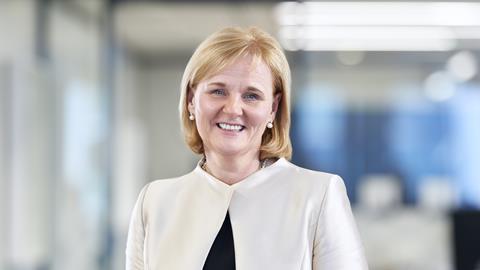Aviva’s activist shareholder wants an 800p share price. Is this realistic?
By Content Director Saxon East
Aviva’s retail shareholders are getting excited.
“In my view, even after the return to shareholders, the share price should settle in the £5 to £6 range. Roll on the results in early March”, wrote an excited Aviva shareholder on online forum ADVFN.

Another posted: “Kicking myself for not buying below £4.”
However, it is not only retail investors, which make up 15% of Aviva’s shareholder base, getting bullish.
Activist investor Cevian Capital is targeting a share price of 800p - at least - in three years’ time.
Set against this optimism is Aviva’s historic poor track record in terms of total returns (dividend and share price).
Is 2022 the year Aviva finally gets lift off to the moon, or is it another false dawn for long-suffering shareholders?
Aviva share resistance
Much has been written on Aviva’s fundamentals, but let’s take a different tack and look at how the share price is playing out in the charts.
The good news is that Aviva, currently trading at 443p, is on the verge of a mini break out. Another 20% to 25% rise is possible, barring a wider market downturn, taking it to 550p.
That’s when it gets interesting.
The 550p to 575p area was a five-year resistance wall (see graph below). This is going to be very difficult to break through.
This was the era of ex-chief executive Mark Wilson. He, like current chief executive Amanda Blanc, cut costs and launched a share buyback programme.

Blanc would argue that this time is different compared to Wilson’s buyback programme, following the sale of the insurer’s foreign operations in order to focus on the UK, Ireland and Canada markets.
Aviva now has a compelling narrative - a slimmed-down, customer focused, UK champion that is returning billions in excess capital while delivering a consistent and ever-increasing dividend.
There is also an argument that Aviva is significantly undervalued. Analysis from data provider Simply Wall Street echoed Cevian’s 800p target.
Simply Wall Street believes Aviva is trading 49.6% below its estimation of fair value, making it bargain stock.

Despite all these positives, the probabilities are against Aviva breaking the 550p resistance wall without further action.
Let’s not forget - the rump of the business lies in the dowdy UK life market. There remains a large, legacy portfolio of policies and while still profit-making, the contribution is diminishing.
In UK general insurance, more than 50% of Aviva’s premium comes from personal lines, where the insurer is reliant on intermediaries whose competitive edge is being eroded away by direct players and burdensome regulation.
If it didn’t exist, you wouldn’t build it.
Even with all the Amanda Blanc gusto, Aviva is likely to remain an unappealing brew for institutions, which make up 85% of the shareholder base, to put their money behind a rally to 800p.
Aviva break up
Amid a prolonged grind or breakdown from this resistance, Cevian would be right to think of further action.
The most obvious option is for Cevian to urge for a sale of part, or all, of the business. This would smash through the resistance wall and propel the share price to fresh intra-year highs.
Cevian has form. Cevian built up a 15% stake in RSA, which eventually sold at a premium to Canadian insurance giant Intact in an all-round pleasing deal for shareholders.
Join the dots together and the logic is clear - a slimmed-down Aviva points to an eventual sale, likely at an irresistible premium to its share price.
Everyone wins.
Blanc can depart Stephen Hester-style with investor applause ringing in her ears, Aviva’s long-suffering shareholders will finally get their payday and Cevian will have perfectly executed its lofty ambitions, with an enhanced reputation at having helped solved one of the insurance industry’s most tricky problems.
800p here we come.
Hosted by comedian and actor Tom Allen, 34 Gold, 23 Silver and 22 Bronze awards were handed out across an amazing 34 categories recognising brilliance and innovation right across the breadth of UK general insurance.




















































No comments yet